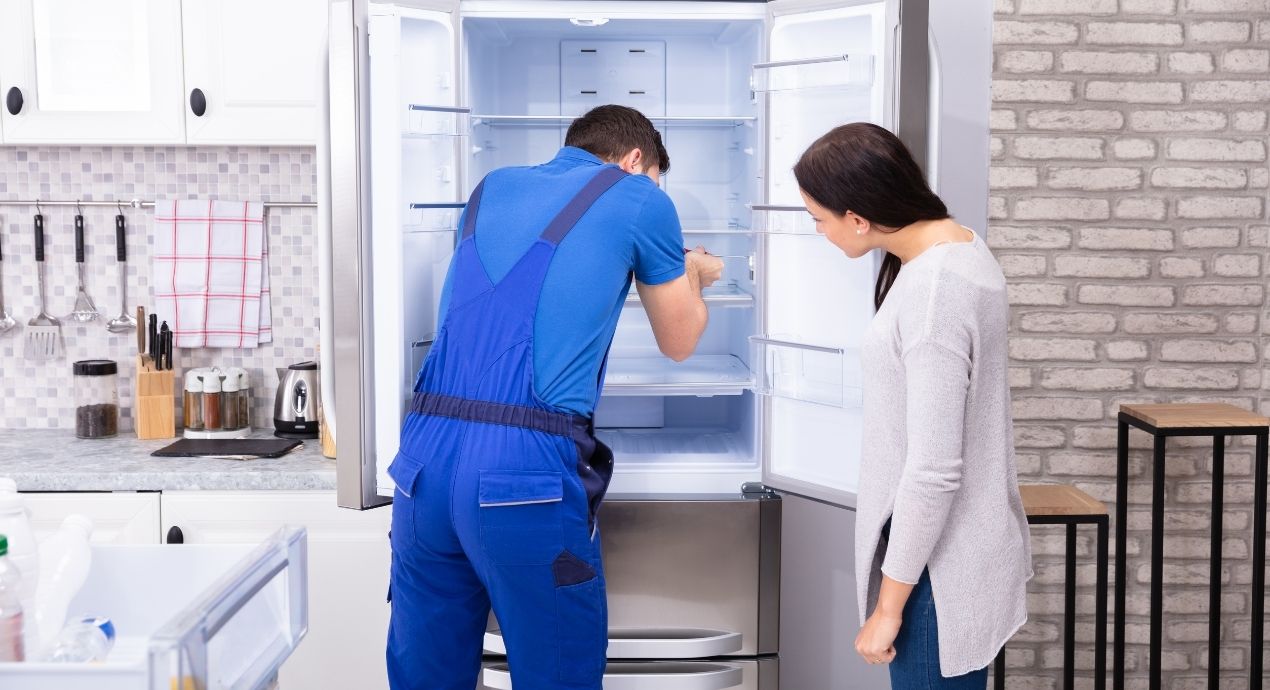A refrigerator is an easy appliance to take for granted. We rely on its continued functionality even when we're not thinking about it—while we're at work, on vacation, even when we're asleep. A malfunctioning refrigerator could be a mild nuisance—maybe the ice maker is a little slow to fill—or it could be a major hassle. A refrigerator that isn't cooling properly, for instance, can result in hundreds of dollars' worth of spoiled food.
Refrigerators may seem like intimidating machines, but DIY refrigerator repair is a possibility for a someone who is relatively handy. In this post, we'll look at some fridge troubleshooting tips to help you know how to fix a refrigerator that is suffering from a common issue.
The Best Home Warranty Service
There's a reason Liberty Home Guard was rated the #1 Home Warranty Service by U.S. News and World Report for 2021, 2022, 2023, and 2024. Check out our services.
Learn MoreTroubleshooting Common Refrigerator Issues
The most common refrigerator problems are inadequate cooling, leaking, and excessive noise. Often, these problems are interrelated. For instance, a warm fridge can cause defrosting, leading to pooling water at the base.
If your refrigerator isn't working as it should, here are some solutions to consider.
- Confirm the power cord is plugged in. It sounds obvious, but it's easy for a refrigerator's power cord to become dislodged from its outlet if the fridge has been moved for cleaning. Checking the power source is a good first step when troubleshooting any appliance. With any luck, plug the cord back in and your problem is solved.
- Check the internal thermostat. It's very common for users to accidentally adjust the thermostat when moving food in or out of their refrigerator. If your fridge is too warm, check your thermostat and reset it if necessary.
- Test the door's seal. The edges of a refrigerator's doors are lined with flexible gaskets to create a seal. Over time, these gaskets can become warped or brittle, which can keep a proper seal from forming. This will lead to a warm fridge or water pooling at the base. Inspect your refrigerator's gaskets for any signs of damage or wear. You can also run your hand along the edges of your closed fridge door to feel for spaces where cold air may be escaping. If you find there isn't a proper seal, replace the refrigerator's gaskets as soon as possible.
- Confirm your refrigerator is not overloaded. Believe it or not, refrigerators have a weight and volume capacity. If your fridge is overloaded with food, it could strain internal components. An overabundance of food also makes it more likely that something will block internal vents, inhibiting air flow. Move bulky items so they don't block vents or the fridge's diffuser. If your refrigerator is overstuffed, considering doing a little spring cleaning to lighten it up.
- Clean your condenser coils. You have likely noticed the exposed coils in the rear of your refrigerator. Because these are exposed to open air, they can accumulate dust, pet hair, and aerosolized cooking oils. Too much dust and residue will prevent your fridge from cooling properly. If your condenser coils look especially dusty, pull your fridge out and clean behind it. A vacuum will take care of the big stuff. You can also purchase a cheap coil condenser brush to finish the job.
- Confirm there isn't a refrigerator diffuser problem. A refrigerator's diffuser is a small box that is usually mounted to the rear ceiling inside the unit. This device regulates airflow by opening and closing a damper that responds to temperature sensors. First remove anything that may be blocking the diffuser. If it's clogged with ice, you can defrost your fridge to free up the blockage. If a visible obstruction isn't the problem, use your hand to test for air coming from the diffuser. If you don't feel anything, your diffuser may need to be replaced.
- Listen for unusual noises. A noisy fridge is usually the result of a faulty or obstructed evaporator fan or condenser fan. It's possible to remove the rear access panel and inspect the fans for damage, but this is a little bit more involved than the solutions above. For most people, it's a good idea to call a professional refrigerator repair technician.
Refrigerator Home Warranty Coverage
Of course, a warm fridge could also be the result of a more complicated problem, such as a failing motor or faulty compressor. These kinds of problems usually call for a professional technician, and the average refrigerator repair cost is somewhere in the $200 to $400 range.
A refrigerator protection plan or home warranty can keep you from paying for those repair costs out of pocket. And knowing how to get home warranty to replace refrigerator components doesn't need to be a mystery. Reach out to the Liberty Home Guard team to learn about plans that can protect your fridge and countless other appliances. Call us at (866)-526-1752. You can also request a free quote through our website.


